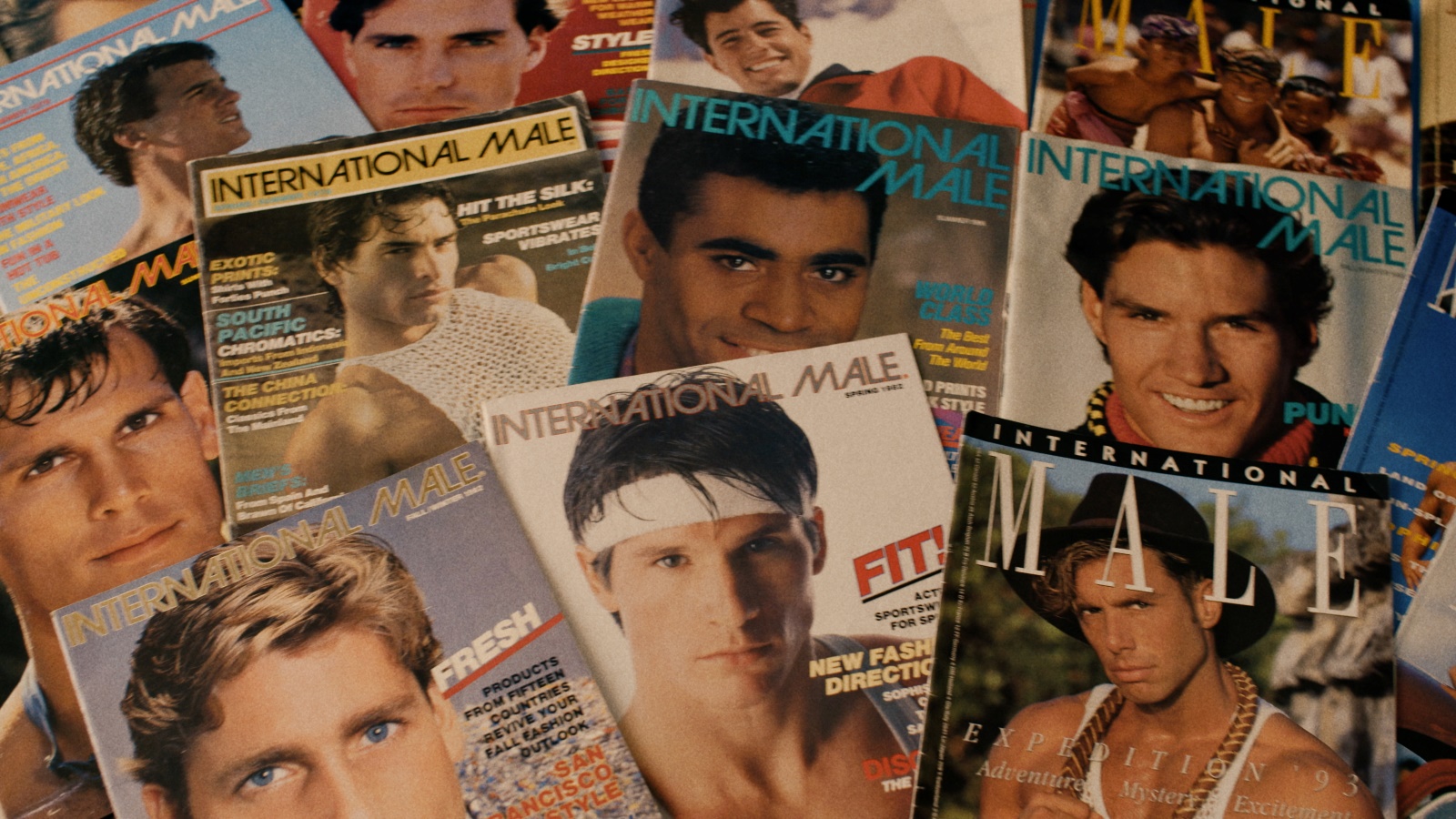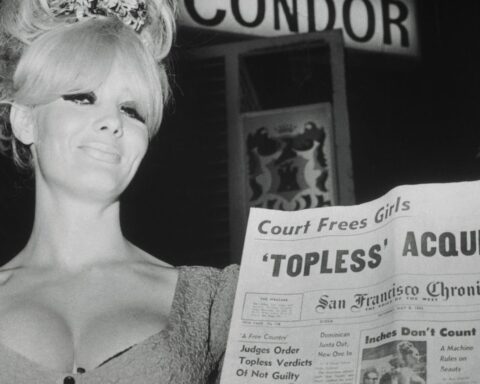All Man: The International Male Story
(USA, 83 min.)
Dir. Bryan Darling, Jesse Finley Reed
“Gay men and straight men have a lot more in common than anybody thinks,” observes an interviewee in All Man: The International Male Story. This documentary might surprise viewers by stating that men love looking at other men regardless of their sexual orientation. All Man traces the story of the menswear catalogue that Gene Burkard established in 1976. An answer to Victoria’s Secret and Playboy alike, International Male provided pages upon pages of well-chiseled man candy for readers to ogle. But this talking heads doc shows how it also democratized the expression of queerness. By making fashion accessible nationwide, men in square states could dress like dandies by mail order. Alternatively, Burkard shares how he, like many other gay men interviewed in the doc, simply wanted fashionable alternatives to grey suits. All Man flips through pages of International Male to uncover an unexpected archive of gay life.
The film finds an engaging origin story as Burkard tells how International Male began with a strong support: jockstraps. He recalls seeing a “scrotal support garment” in a medical supply story and thinking it could make great gay gear. With a few nips and tucks, the “Jock Sock,” now known as the jockstrap, was born. Burkard shares the challenges of placing advertisements with an image featuring a nearly-nude male. Girls in swimsuits were fine, the talking heads of All Man say, but male flesh remained taboo. Thanks to Playboy, though, and the success of Playgirl, Jock Socks were noticed. Once the sporty undergarment took off, Burkard hired a secretary, Gloria Tomita, and expanded an empire by creating a catalogue. Men could order clothes that defied trends in off-the-rack fashion and see their desires expressed in images.
Re-imagining Masculinity
All Man takes a straightforward talking heads approach to recreate the International Male story. Participants from the early and later publishing days of International Male remember the genesis of the catalogue with excitement. There’s a great discussion of queer coding here among the interviewees. Talking heads reflect upon the power of seeing images that bucked the conventional American likeness of masculinity. They credit International Male for expanding notions of masculinity beyond the Marlborough Man, Charles Bronson, and Clint Eastwood. The pages of International Male were by no means erotic, but the interviewees express how a man in a puffy shirt could prove as alluring as a Playgirl centrefold. The photos exude confidence. Burkard et al say that men who felt insecure with their sexuality or masculinity could overcome their anxiety by seeing photos of virile men posing ecstatically in clothes of vibrant colours and chic designs.
The talking heads raise notions of the male gaze that comes with identifying the relationship between confidence and the body beautiful. Staffers, models, and readers tell how International Male cracked a code by appealing to men both straight and gay. Straight men could see the chiselled dapper dudes and see an image of masculinity to which they could aspire. Gay men, meanwhile, could see the chiselled dapper dudes and see an image of masculinity to which they could aspire to have in bed. One humorous sequence details the relationship between subscribing to International Male and masturbating to it. But straight models in the film admit they adjusted to the idea quickly. They admit that heterosexual men used the Sears catalogue for similar reasons. They see it as a compliment.
Moreover, the film shares how women also lusted after the guys of International Male. All Man tells how wives and girlfriends perused the pages to expand their husbands’ or boyfriends’ wardrobes. The film illustrates how conservative America craved outlets for self-expression through fashion.
The End of an Empire
All Man follows the success of International Male through the tragedies of gay history, like the AIDS crisis. Tomita tearfully remembers all the colleagues and friends she lost. Other interviewees look at the catalogue’s existence as evidence of the greater struggle between conservatism and progress. Even the interviews with staffers who recalls recoiling when they heard International Male referred to as a “gay magazine” are revealing. As the publication evolved and changed hands, the storytellers convey how the folks who took over the masthead lost sight of the core audience. As its new lead creatives emphasizes a heterosexual gaze, the publication paved the way for campaigns like Abercrombie and Fitch’s white hot marketing and TikTokers who expand even further images of masculine desire, while major fashion houses owe International Male credit for creating the meterosexual male market.
Directors Bryan Darling and Jesse Finley Reed chart this slice of history with an upbeat sense of humour and a fine eye for the male body. The documentary has as many curves and well-toned pecs as an issue of International Male, but it’s perfectly PG-13 entertainment. The narration, voiced by actor Matt Bomer, remains earnestly celebratory throughout, although it briefly pauses to note how the catalogue shared the fashion biz’s lack of diverse representation. At times, it may feel as if the documentary overreaches in ascribing so much significance to a capitalist endeavour. But from a publisher’s point of view, the film reflects a relevant need to put one’s pages to good use.













